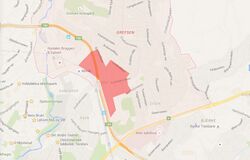LED 2016 Group F Landscape Democracy Challenge 2: Difference between revisions
| Line 45: | Line 45: | ||
=== What could be a starting point for democractically-based change? === | === What could be a starting point for democractically-based change? === | ||
As already stated, various project were already developed to improve the area; the overall situation is surely better than few years ago, but many things could still be done to transform Piazza Verdi into a social and sustainable public space. | |||
In 2011 the government converted the nearby streets into pedestrian, connecting the square to the arcades and the University district; this led to an enlarged use of the square. Few years after the municipality also provided it with new public furniture, such as benches and trees, and a free Wi-Fi. Many citizens took part of this process as well, as a woman who donated 35.000 euro to build public toilets or a group of volunteers, who increased the number of recycling bins for a night. | |||
The challenge now is to involve in this regeneration any user of the square, from the student passing by early in the morning to the groups of friends who sits there late in the night, to dissuade illegal affairs and create a truly public space. | |||
== References == | == References == | ||
Revision as of 15:34, 17 May 2016
Piazza Verdi and its need for a public care
| Place name | Piazza Verdi | |
| Location | Bologna | |
| Country | Italy | |
| Author(s) | Federica Fuligni | |

| ||
Rationale: Why have you chosen this case for the landscape and democracy seminar?
- Why is this case relevant?
I decided to choose as a democratic challenge in my personal landscape the case of PIAZZA VERDI, in Bologna. It is a public square right in the centre of the historical city, surrounded by a very social area. Being in the University district, students cross it every day on their way to classes and exams; many cafes and bars are places nearby so it could be a location for nice breaks from early in the morning to the aperitivo time in the evening. One of the main theatres of Bologna is also placed in Piazza Verdi, such as different historical sites, so it could also host cultural events. Instead, everyone knows it for its degradation and suspicious users, especially after the sunset. Many projects took place over the years to change the situation, some of them really effective, others less, but the square still needs a common reaction to become a high quality public space.
Representation of your observations
- you are basically free to use one or a mix of different presentation techniques
- possibilities are: analytical drawings, graphical representations, collages, video clips, comic/graphic novel, written essay/visual essay
- please add any visual material to the gallery, videos can be placed below, you may add text as you like
- Yourfilename1.jpg
case representation
- Yourfilename2.jpg
case representation
- Yourfilename3.jpg
case representation
- Yourfilename4.jpg
case representation
Reflection
What are the major challenges for changing the situation?
The problems of Piazza Verdi and the surrounding areas are various but I describe the major ones. It is commonly known how people can buy cheap alcohol and drugs in the square from illegal sellers; this could be identified as a main issue, since it strongly influence the following ones. People in fact spends the whole night in the square, drinking and playing instruments, before leaving on the floor empty bottles and any kind of rubbish. In addition the area is characterized by a terribly bed smell, caused by drunk people using the arcades as open-air toilets. Moreover, Piazza Verdi could be an unsafe area to cross, especially during the night for a girl alone, due to past cases of robbery and abuses.
What could be a starting point for democractically-based change?
As already stated, various project were already developed to improve the area; the overall situation is surely better than few years ago, but many things could still be done to transform Piazza Verdi into a social and sustainable public space. In 2011 the government converted the nearby streets into pedestrian, connecting the square to the arcades and the University district; this led to an enlarged use of the square. Few years after the municipality also provided it with new public furniture, such as benches and trees, and a free Wi-Fi. Many citizens took part of this process as well, as a woman who donated 35.000 euro to build public toilets or a group of volunteers, who increased the number of recycling bins for a night. The challenge now is to involve in this regeneration any user of the square, from the student passing by early in the morning to the groups of friends who sits there late in the night, to dissuade illegal affairs and create a truly public space.
References
- ...
- ....
- ...
- Please make sure that you give proper references of all external resources used.
- Do not use any images of which you do not hold the copyright.
- Please add internet links to other resources if necessary.
About categories: You can add more categories with this tag: "", add your categories